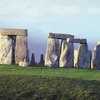Where once thrived Tenochtitlan, epicenter of the Aztec empire, now stands Mexico City, capital of the modern state of Mexico and the heart of a sprawling metropolitan area with 22 million residents. One of the most densely populated urban areas anywhere, Mexico City has the highest altitude -- 7,350 feet -- of any North American city, which contributes to its relatively mild weather.
History of Mexico City
Mexico City occupies the site where in the 1320s, according to legend, the Aztecs saw an eagle on a cactus clutching a snake in its beak, which they interpreted as a sign that they should settle the region. Tenochtitlan, the city they were inspired to construct, was among the largest in the world by the time conquistador Hernan Cortes arrived two centuries later and demolished it to build a capital for New Spain. This succession is reflected in Mexico City's historic quarter, a UNESCO World Heritage Site, where attractions include Templo Mayor -- one of five Aztec temple ruins within the city -- and the Metropolitan Cathedral, North America's largest.
Mexico City Today
Often associated with crime, smog and the occasional earthquake -- the city sits on a fault line -- it is a lesser known fact that Mexico City has one of the greatest concentrations of museums of any city in the world with more than 170, including renowned institutions like the National Museum of Anthropology.
References
- UNESCO World Heritage Centre: Historic Centre of Mexico City and Xochimilco
- Fodor's Travel Guides: Mexico City Background
- Fodor's Travel Guides: Mexico City's Coolest New Museums
- Fodor's Travel Guides: Mexico City -- Catedral Metropolitana Review
- Fodor's Travel Guides: Mexico City -- Safety
- Fodor's Travel Guides: Mexico City -- How's the Weather?
Photo Credits
- Phototreat/iStock/Getty Images




